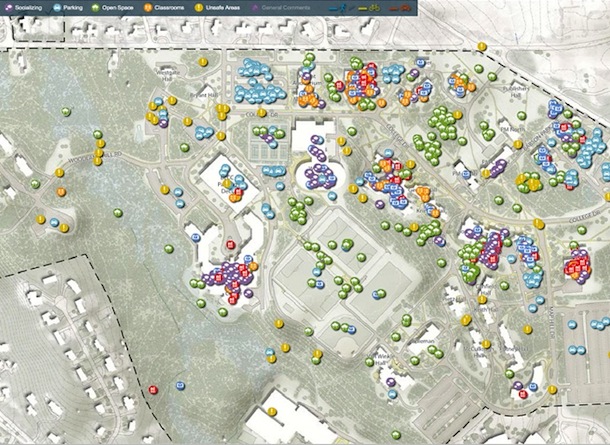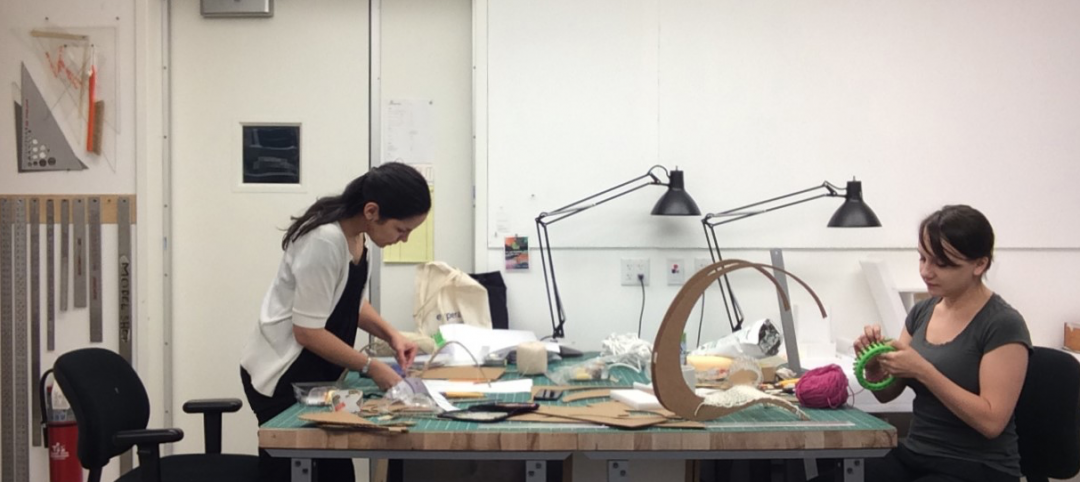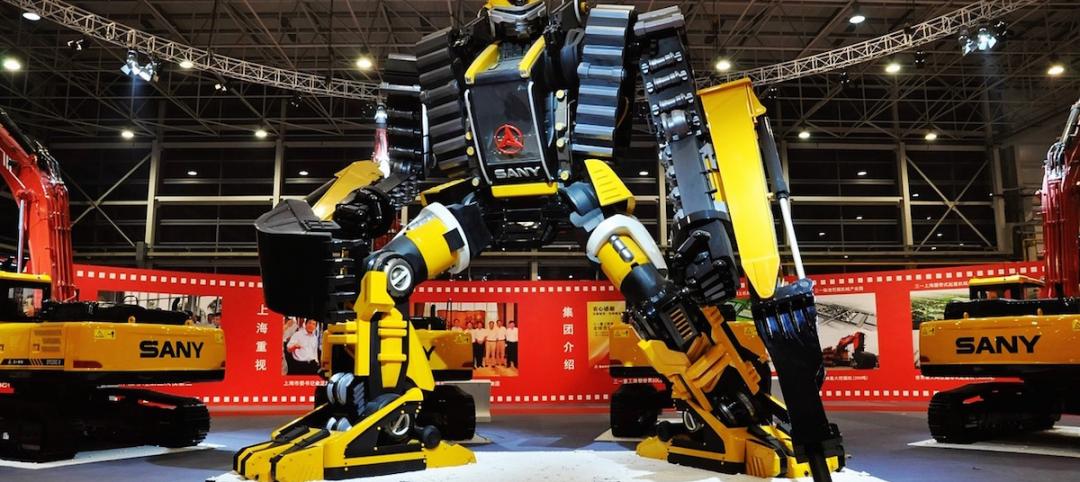This article is part of BD+C's special five-part Technology Report 2014: Top tech tools and trends for AEC professionals.
Get ready, AEC professionals. The design table is about to get much more crowded—like really crowded. I’m talking hundreds, even thousands of voices, all providing invaluable input on your next project. These, of course, are the future occupants and end users of the spaces you create.
For the first time, the masses can have a real say in how the built environment around them is formed—that is, if Building Teams are willing to listen.
The rise of mobile devices and social media, coupled with the use of advanced survey tools and interactive mapping apps, has created a powerful conduit through which Building Teams can capture real-time data on the public—what spaces they like most and least in a given building, where they prefer to hang out on campus, whether they take public transportation or drive to work.
Using Twitter feeds, mobile apps, and security camera footage, Building Teams can observe how people move through a building or campus. They can pose hypothetical situations (“If we added a food court in the student union, how often would you use it?”) and ask for feedback on early design schemes.
With advanced traffic flow simulation programs that allow users to program thousands of avatars with unique behavioral characteristics, Building Teams can predict—with a much higher degree of certainty—how people will interact with a space layout.
Building-occupant research has long played a critical role in project planning. What’s changing is the immediacy and sheer amount of data, and the ease by which it can be collected and analyzed.
"Like it or not, the democratization of design is on the horizon. Terms like 'crowdsourced placemaking' and 'data-driven design' will soon become commonplace."
As the Big Data movement takes hold in the commercial construction market, your clients will be looking to you for more than just well-informed opinions and industry benchmarks on which to base their real estate decisions. Analytics will soon drive many planning and design strategies, and detailed occupancy evaluations—both pre- and post-occupancy evaluations (POE)—will play a larger role on projects.
AEC firms don’t exactly have a great track record when it comes to using POEs to learn from their past projects—an issue we raised last year (www.BDCnetwork.com/post-oc). In fact, many AEC professionals admit to rarely visiting their past work, even for informal observation. The coming data boom is going to force firms to incorporate this type of analytical research into their design and planning processes.
Arup, Perkins+Will, and Sasaki Associates are among the firms to develop custom digital tools for polling building occupants and end users. The firms also have extensive expertise in analytics and are applying advanced data-driven design techniques on projects.
“This type of analysis is leading us to conclusions that we would have never discovered otherwise,” says Raj Patel, a Principal with Arup. As an example, he points to the JetBlue Terminal 5 project at John F. Kennedy Airport in New York, where detailed traffic flow simulations and POEs showed that travelers would respond more favorably to small gathering areas rather than a single, large atrium approach that is common in airport terminals. This decentralized design strategy, the analysis showed, would also streamline pedestrian flow through the spaces, minimizing bottlenecks.
Like it or not, the democratization of design is on the horizon. Terms like “crowdsourced placemaking” and “data-driven design” will soon become commonplace. It’s up to Building Teams to hear these newfound voices at the design table.
More from Author
David Barista | Aug 15, 2019
3 ‘Giant’ AEC market trends for 2019-2020
We’re starting to see a shift toward custom research, thanks in part to the influx of data, data tools, and analytics expertise in the AEC market.
David Barista | Jul 31, 2019
Amenities war no more? Research report explores multifamily market
Multifamily developers show no signs of pulling back on specialty spaces and unique offerings in an effort to attract high-quality tenants, according to new research from Multifamily Design+Construction.
David Barista | Dec 30, 2016
An open letter to the AEC C-suite
Women AEC professionals need you to take action.
David Barista | Sep 6, 2016
Innovation intervention: How AEC firms are driving growth through R&D programs
AEC firms are taking a page from the tech industry, by infusing a deep commitment to innovation and disruption into their cultural DNA.
David Barista | Jun 27, 2016
If ‘only the paranoid survive,’ what does it take to thrive?
“Sooner or later, something fundamental in your business world will change.” The late Andrew Grove (1936-2016), Co-founder of tech giant Intel Corp., lived by these words.
David Barista | May 31, 2016
As commercial buildings get ‘smarter,’ concerns rise over cybercrime
As buildings become increasingly connected, opportunistic hackers have countless avenues into a building’s network.
David Barista | May 9, 2016
Is the nation’s grand tech boom really an innovation funk?
Despite popular belief, the country is not in a great age of technological and digital innovation, at least when compared to the last great innovation era (1870-1970).
David Barista | Mar 31, 2016
Deep Learning + AI: How machines are becoming master problem solvers
Besides revolutionary changes to the world’s workforce, artificial intelligence could have a profound impact on the built environment and the AEC industry.
David Barista | Feb 24, 2016
Is the booming freelance economy a threat to AEC firms?
By shifting the work (and revenue) to freelancers, “platform capitalism” startups have taken considerable market share from traditional businesses.
David Barista | Jan 26, 2016
How the Fourth Industrial Revolution will alter the globe’s workforce
The next great technological metamorphosis will be unlike anything humankind has experienced before, due to the sheer size, speed, and scope of disruption.
















